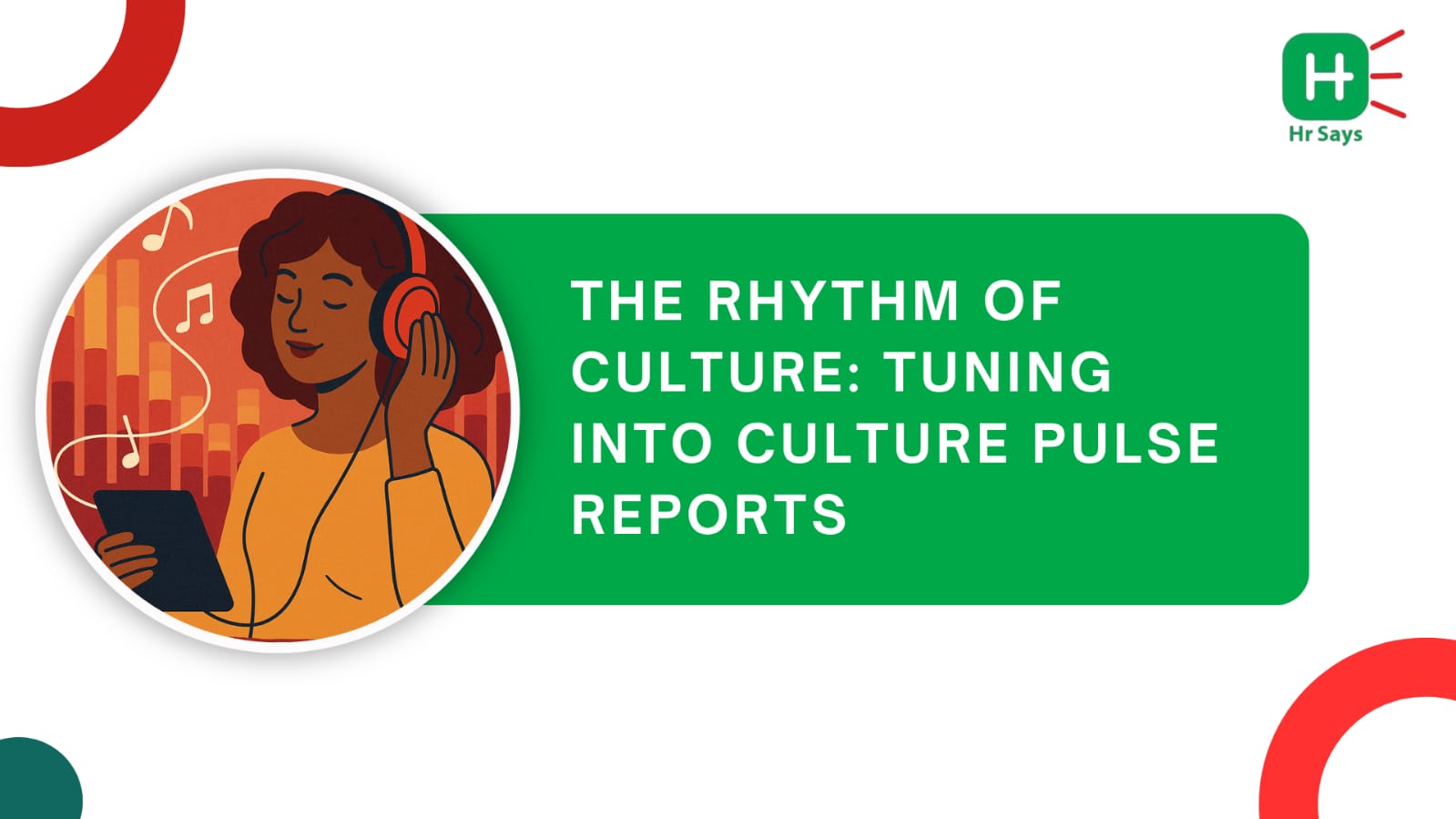Ever felt the workplace vibe shift but couldn’t put your finger on why? Culture Pulse Reports can help you sense what’s really going on—quietly, regularly, and without guesswork. Here’s how to build them right and actually use them.
What Are Culture Pulse Reports?
Culture Pulse Reports are recurring internal snapshots of how employees feel, behave, and align with your company culture. They’re not surveys for the sake of it. They’re rhythm checks. Insights into team morale, engagement and alignment in a snap. Built properly, they shout they are in pace or out of instead with the heartbeat of your culture.
Why They Matter
People rarely say out loud when things feel wrong. Culture often slips through the cracks before it’s noticed in performance or attrition reports. Pulse reports catch that early.
When used well, they can:
● Identify growing disconnects
● Track response to leadership changes
● Highlight team-level friction
● Catch early burnout signs
● Reveal where culture thrives (and where it doesn’t)
Not every issue shows up in KPIs. But it always shows up in the culture.
Building a Culture Pulse Report That Works
Anyone can run a survey. But a real Culture Pulse Report needs structure, timing, and purpose. Here’s what that takes:
1. Decide What You’re Listening For
Not everything needs to be tracked at once. Ask:
● Are we measuring belonging?
● Are we checking workload balance?
● Do we want to understand how safe people feel to speak up?
Start small. One or two focused themes. Deep is better than wide.
2. Keep It Short
Think snapshots, not documentaries.
● 5–7 carefully worded questions
● Clear scale (1–5 or emoticons work fine)
● Optional comment box
The goal: honest answers, not survey fatigue.
3. Send It Often, But Not Too Often
Monthly or quarterly is ideal. Weekly? That’s noise. Too infrequent? It won’t catch changes in
real-time. Tie the timing to team rhythms—right before a review cycle or after a big org shift.
4. Stay Anonymous, Stay Trusted
People won’t open up if they feel watched. Use platforms that protect identity. Make that
known. Trust builds slowly. Break it once, and the pulse dies.
Making Use of the Insights
Reports without action are just decoration. Once you gather feedback:
● Spot trends, not individual comments
● Share the takeaways with teams
● Tell people what’s changing as a result
● Don’t promise fixes—promise response
A one-line shift in a manager’s approach can do more than a company-wide policy change.
What Not to Do
● Don’t ask questions leadership isn’t ready to hear answers to
● Don’t collect data with no intent to act
● Don’t turn a pulse report into a performance review trap
People know when a tool is genuine—or a trap.
Conclusion
Culture doesn’t collapse overnight. It leaks slowly—through silence, disengagement, and quiet exits. Culture Pulse Reports can catch the leak. If they’re built to listen. And used to act. They don’t fix culture—but they can help you care for it.

 Culture Pulse Reports are regular, focused tools to sense employee sentiment and cultural alignment. Built thoughtfully and used with intent, they help companies notice what traditional metrics miss—before it’s too late.
Culture Pulse Reports are regular, focused tools to sense employee sentiment and cultural alignment. Built thoughtfully and used with intent, they help companies notice what traditional metrics miss—before it’s too late.












.jpeg)












.jpeg)